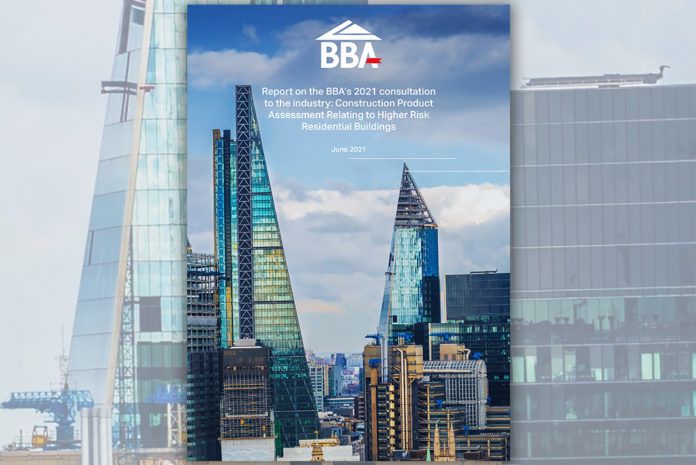The British Board of Agrément’s (BBA) industry consultation into driving up construction product safety standards for Higher Risk Residential Buildings (HRRBs) has revealed that the market considers poor workmanship and uncontrolled value engineering to pose the biggest risks to the built environment.
More than 10,000 viewpoints were collected during the 15-week consultation entitled: ‘Construction Product Assessment Relating to Higher Risk Residential Buildings’, with product manufacturers and BBA certificate user groups representing architects, specifiers, warranty providers, insurers, construction managers, funders, building control, and regulators giving their opinions.
The initiative was launched to gather feedback on the role that building product certification plays in the safe construction and refurbishment of HRRBs, the BBA’s proposal of creating an ‘Agrément Plus’ certification scheme to deal specifically with HRRB safety requirements and to explore wider issues.
Professor Bill Hewlett, technical director of the BBA, said: “Risks from poor workmanship and unchecked value engineering were on our radar to investigate. But the strength of feeling about them came as a surprise and is an important finding.”
The consultation reinforced the message that responsibility for safety in the built environment lies with everyone throughout the supply chain, build process and onwards.
However, the manufacturers, trade associations and user groups the BBA spoke with felt they were shouldering their responsibilities but expressed concerns for the domestic Repair, Maintenance and Improvements (RMI) sector, pointing out that on-site control is often not practical to independently verify and that design detailing needs close attention.
Bill added: “These questions of workmanship control and uncontrolled value engineering warrant industry leadership attention, and clearly, a focus on domestic RMI is needed.”
Ideas
The BBA opened the consultation in February, holding preliminary interviews which yielded a variety of ideas on how it might approach product certification for HRRBs. From its research partner Mace & Menter, validated findings and ran a quantitative survey.
“The norm is to test ideas across stakeholders with regards to Agrément Certification,” said Bill. “But a much wider demographic was engaged during this consultation, with a clear mandate to consult with the entire supply chain focusing on the role that building product certification has to play and how it can assist in meeting the higher safety standards required for HRRBs as identified in Dame Judith Hackitt’s report ‘Building a Safer Future’.
“We are incredibly thankful to the wider industry for engaging with us and providing valuable, honest feedback on the BBA and how it can become even more efficient in building a safer, more sustainable industry.”
Five key action points the BBA has taken from the consultation include:
- Further systemisation of BBA processes.
- Strengthened testing regimes.
- Digitisation of BBA processes and certificates.
- A spotlight on sustainability and ethical sourcing.
- Greater collaboration with industry leadership and certificate users.
Data generated from the exercise was extensive and identified that the market has high regard for BBA Agrément Certification and supports its future success; its integrity and fitness-for-purpose attestation are seen as vital and unique. That said, ideas being discussed (particularly digitisation) could lead to a shift in how the BBA interacts with the market and see permanent changes to all certificates and not just those for HRRBs.
In addition, the overarching view of consultees was that a two-tier ‘Agrément’ and ‘Agrément Plus’ approach was not an appropriate way forward. This regime would have seen products with an Agrément Plus certificate attested as fit for use in HRRBs whereas products with an Agrément certificate would not be.
“The preference was that the format of the Agrément certificates should be developed so that fitness (or lack of it) for use in HRRBs is clearly identified,” added Bill. “We feel a modular style of certificate can achieve this.”




